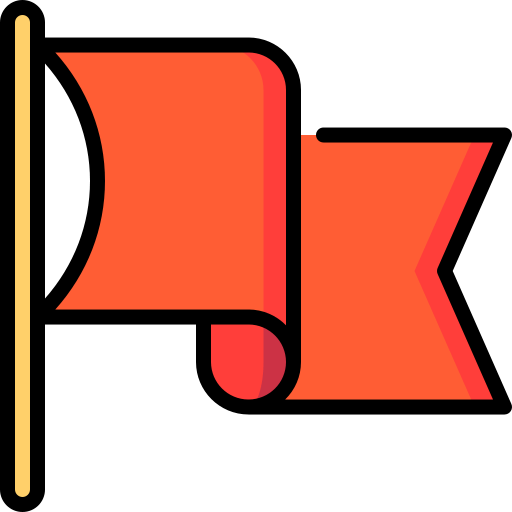Flag of Germany
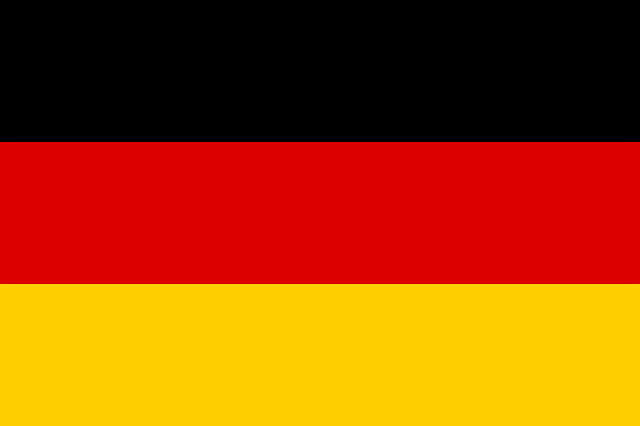
German flag
- Official approval of the flag: 1949
- Flag emoji: 🇩🇪
- Period: Modern flags
- Type of flag: Flags of countries • Flags of continental countries
- Belonging to the continent: Europe
- Colors on the flag: yellow • red • black
- Emblem on the flag: Without emblem
Germany is located in central Europe, bordering Denmark to the northwest, the Netherlands, Belgium, and France to the west, and Poland and the Czech Republic to the east. Its capital is Berlin. The country’s area is 357,386 km², with a population of over 83 million people. Germany was united in its present form in 1990 after the fall of the Berlin Wall. The official language is German, with English being popular among young people. The national composition includes Germans, Turks, Poles, and others. Germany is a key economic power in the EU and the world, has a strong industry and a famous cultural heritage.
The German flag, known as the black, red and gold tricolor, is one of the main symbols of the Federal Republic of Germany. It consists of three horizontal stripes of equal width: black, red, and gold, which reflect the historical struggle for unity, freedom, and democracy. As with the French flag, the German flag has strictly regulated specifications: colors, proportions, and display order.
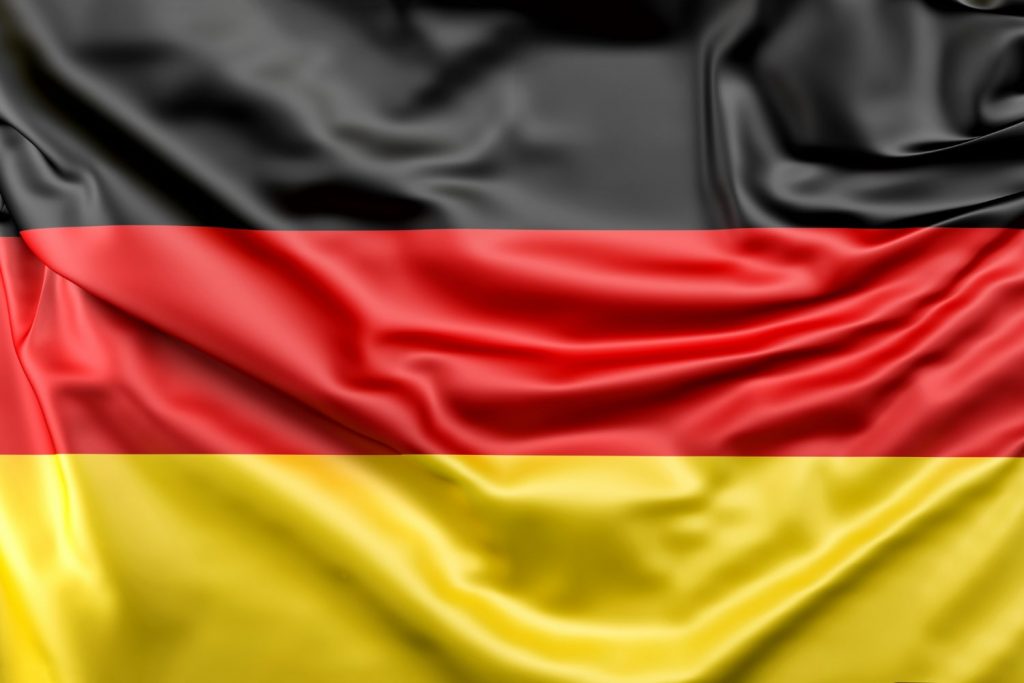
History of the German flag
The black, red, and gold flag has a long and complex history that reflects the different stages of the formation of modern Germany. It has its roots in the Napoleonic Wars and the national liberation movement of the 19th century.
The origin of the tricolor
- Black, red, and gold colors first appeared on the uniforms of Lutzow’s volunteer battalions (1813), which fought against Napoleon. The black uniform with red trim and gold buttons became the prototype of the national symbol.
- In 1832, during the national congress in Hamburg, these colors were used as a symbol of the desire for unity, freedom, and human rights.
The first official tricolor
The flag in its current form was first approved in 1848 during the German Revolution. Back then, it symbolized the struggle for a democratic Germany. However, after the defeat of the revolution, the flag lost its official status.
Restoration and modernity
- In 1919, after the First World War, the black, red, and gold tricolor became the official flag of the Weimar Republic.
- During the period of Nazi Germany, the flag was replaced by party symbols.
- In 1949, after the Second World War, the tricolor became the official flag of West Germany and a symbol of democratic ideals. At the same time, East Germany (GDR) added its coat of arms to the flag.
- In 1990, after the reunification of Germany, the flag without the coat of arms again became a symbol of a single country.
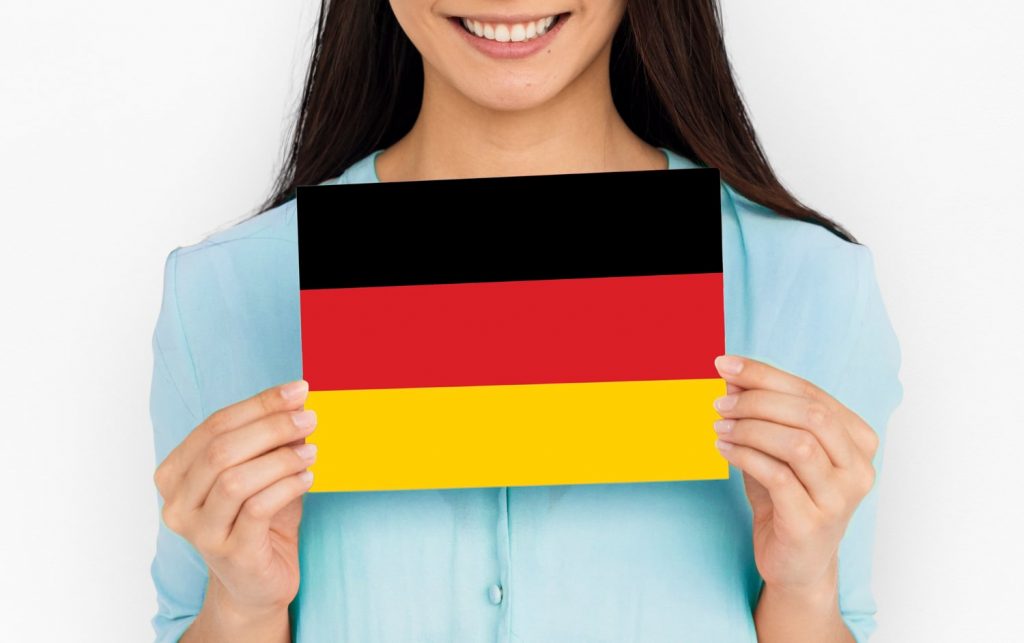
Colors of the German flag
Meaning of the colors
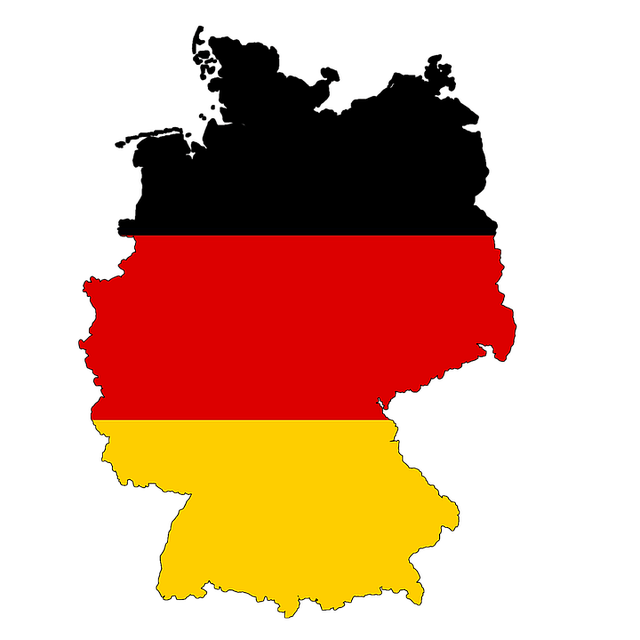
Each color of the German flag has a historical and symbolic meaning:
- Black:
- It represents the dark times of enslavement and the struggle for freedom.
- It is associated with heroism and resistance during the wars of liberation.
- Red:
- Symbolizes the blood shed in the struggle for freedom and unity.
- It is also the color of revolutionary ideas.
- Gold (yellow):
- It represents a bright future, the desire for peace and prosperity.
- Reflects the ideals of democracy and national revival.
Color codes
In order to ensure the accuracy of the flag’s representation, color codes in different color systems are officially defined.
- Black:
- RGB: (0, 0, 0)
- HEX: #000000
- CMYK: (0, 0, 0, 100)
- Pantone: Black
- Red:
- RGB: (221, 0, 0)
- HEX: #DD0000
- CMYK: (0, 100, 100, 13)
- Pantone: 485 C
- Gold:
- RGB: (255, 206, 0)
- HEX: #FFCE00
- CMYK: (0, 20, 100, 0)
- Pantone: 1235 C
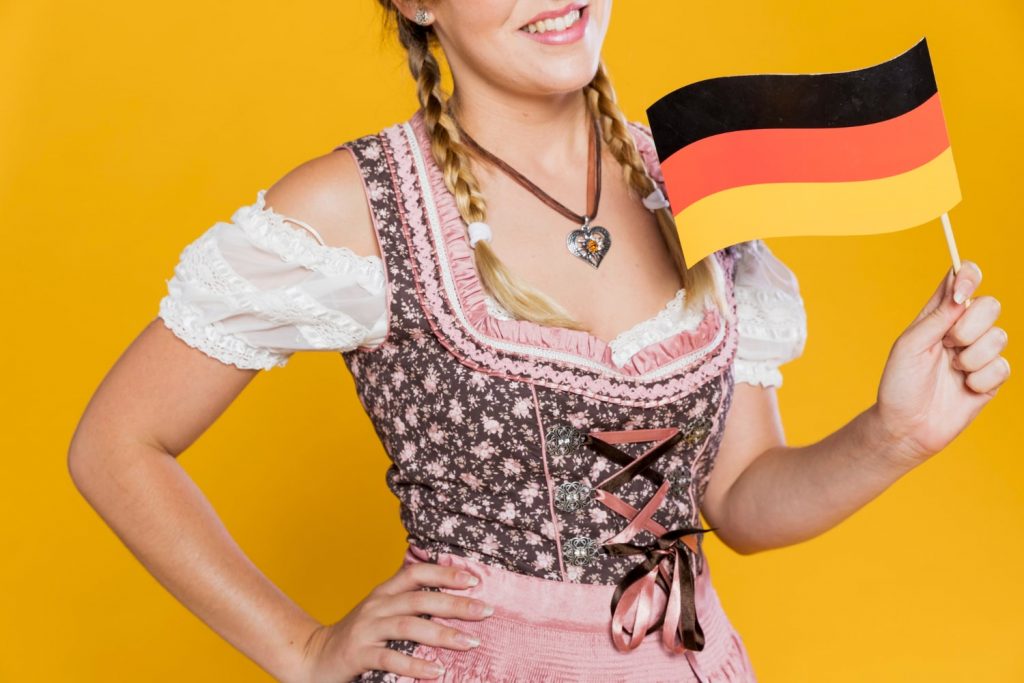
Format and proportions
The German flag has a standardized format that ensures its correct representation.
Flag proportions
The standard aspect ratio of the flag is 3:5. This means that the width of the flag should always exceed the height by a ratio of three to five.
The arrangement of the stripes
The order of the flag colors (from top to bottom):
- Theblack stripe is at the top.
- Thered stripe is in the middle.
- Thegolden stripe is at the bottom.
If the flag is used vertically, the black stripe should be on the left (or top, depending on the orientation).

Interesting facts about the flag of Germany
- The black, red, and gold flag is associated with democratic ideals, while the black, white, and red tricolor was used in Imperial Germany and during the reign of the Kaiser.
- The German tricolor has been a source of inspiration for other national flags, such as the flag of Belgium (black, yellow, and red).
- After German reunification in 1990, the flag became a symbol of unity not only in geographical but also in ideological terms.
The German flag is more than just three colors. It represents a rich history of struggle for freedom, unity and democracy. Its symbolism is deeply rooted in the national movement of the 19th century and remains relevant today. As a symbol of unity, peace and democratic ideals, the black, red and gold tricolor continues to inspire generations of Germans and represent Germany on the international stage.
